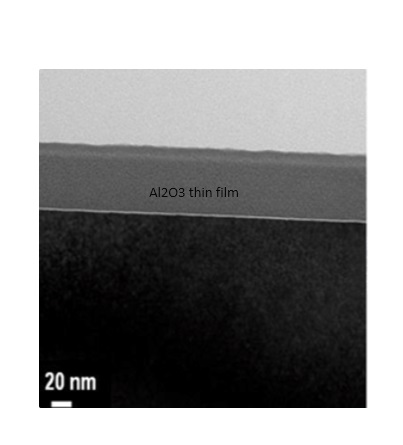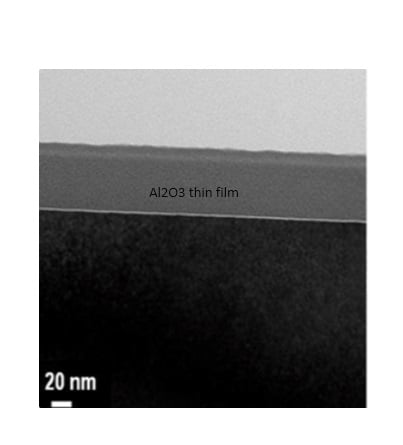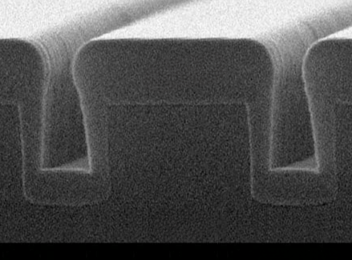Learn ALD: Microscopy and Beyond

Explore the world of Atomic Layer Deposition (ALD) and its connection to microscopy, understanding the precise technique of depositing thin films for various applications in nanotechnology and materials science.

Deposition of aluminum oxide film through the atomic layer deposition technique
Understanding Atomic Layer Deposition (ALD)
Atomic layer deposition (ALD) is a precise and highly controllable technique used to deposit thin films of materials onto various substrates. It involves the sequential exposure of the substrate to alternating precursors, resulting in the growth of a single atomic layer at a time. This unique process allows for precise control over film thickness and composition, making ALD an essential tool in nanotechnology and materials science.
ALD relies on self-limiting surface reactions, where each precursor molecule reacts with the substrate surface to form a monolayer before the excess precursor is purged. This self-limiting nature of ALD enables precise control of film thickness with sub-nanometer accuracy, making it suitable for applications requiring precise and uniform thin films.
The understanding of ALD mechanisms and the factors influencing film growth is crucial for optimizing deposition processes and achieving desired film properties. Researchers investigate the surface chemistry, reaction kinetics, and precursor properties to gain insights into ALD mechanisms and develop new strategies for enhancing film quality and conformality.
Overall, understanding the principles behind ALD is essential for mastering the technique and harnessing its full potential in various applications, such as electronics, energy storage, semiconductor, and more.
The Role of Microscopy in ALD
Microscopy plays a crucial role in the study and characterization of atomic layer deposition (ALD). By employing various microscopy techniques, researchers can gain valuable insights into film growth, morphology, composition, and interface properties.
Scanning electron microscopy (SEM) is commonly used to investigate the surface morphology and topography of ALD films. It provides high-resolution images that reveal the film's thickness, roughness, and uniformity. SEM can also be combined with energy-dispersive X-ray spectroscopy (EDS) to analyze the elemental composition and distribution within the film.
Transmission electron microscopy (TEM) allows for the characterization of ALD films at the atomic scale. It provides detailed information about the crystal structure, grain boundaries, defects, and interfacial properties. TEM imaging, combined with selected-area electron diffraction (SAED), can provide valuable insights into the crystallographic orientation and phase composition of the films.
In addition to electron microscopy, atomic force microscopy (AFM) is employed to study the surface topography and properties of ALD films at the nanoscale. These techniques enable the visualization of surface features, such as step edges, islands, and surface roughness, providing critical information for understanding film growth and quality.
Overall, microscopy techniques play a vital role in the characterization and understanding of ALD films, facilitating the optimization of deposition processes and the development of new materials with tailored properties.
Applications of ALD in Nanotechnology
Atomic layer deposition (ALD) has found extensive applications in the field of nanotechnology, owing to its ability to deposit precise, conformal, and uniform thin films on various substrates.
ALD is widely used in the semiconductor industry for the fabrication of advanced microelectronic devices. It enables the deposition of high-k dielectric materials, metal gates, and barrier layers with excellent thickness control and uniformity. ALD is also employed in the production of nanoscale transistors, memory devices, and interconnects.
In the field of energy storage, ALD plays a crucial role in the development of next-generation batteries and supercapacitors. It allows for the deposition of protective coatings, solid electrolytes, and electrode materials with enhanced performance and stability. ALD is also utilized in the fabrication of fuel cells, solar cells, and other energy conversion devices.
ALD finds applications in various other areas, including catalysis, optical coatings, sensors, biomedical devices, and protective coatings. Its ability to deposit conformal and uniform films on complex three-dimensional structures makes it highly desirable for coating nanoparticles, nanowires, and nanostructured materials.
The versatility and precision of ALD make it a promising technique for enabling new technologies and pushing the boundaries of nanoscience and nanotechnology.
Atomic Layer Deposition: Enhancing Oxidation Processes
Atomic layer deposition (ALD) has emerged as a powerful technique for enhancing oxidation processes and controlling oxide film properties.
ALD enables the deposition of ultrathin oxide films with precise control over composition, thickness, and interface properties. By carefully selecting precursor chemistries and reaction parameters, researchers can achieve highly uniform and defect-free oxide films.
ALD is widely used in the fabrication of advanced semiconductor devices, where oxide films are crucial for various functionalities, such as gate dielectrics, passivation layers, and diffusion barriers. The ability to deposit conformal and uniform oxide films on complex three-dimensional structures makes ALD an ideal technique for device integration and scaling.
ALD can also be employed to engineer the properties of oxide films, such as their electrical conductivity, optical transparency, and surface reactivity. By introducing dopants or alloying elements during the deposition process, researchers can tailor the oxide film properties to meet specific application requirements.
Furthermore, ALD can be used to create complex multilayer oxide structures and heterostructures, enabling the development of novel materials and devices with unique functionalities. The precise control over film thickness and composition offered by ALD opens up new possibilities in the design and engineering of oxide-based materials.
Overall, ALD plays a vital role in enhancing oxidation processes and enabling the fabrication of advanced oxide films with tailored properties, facilitating advancements in electronics, energy, and other fields.





